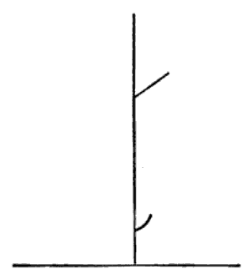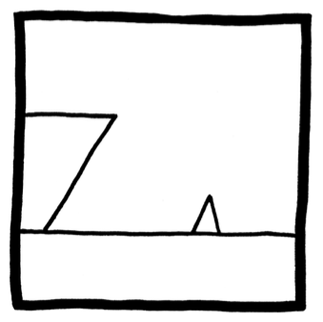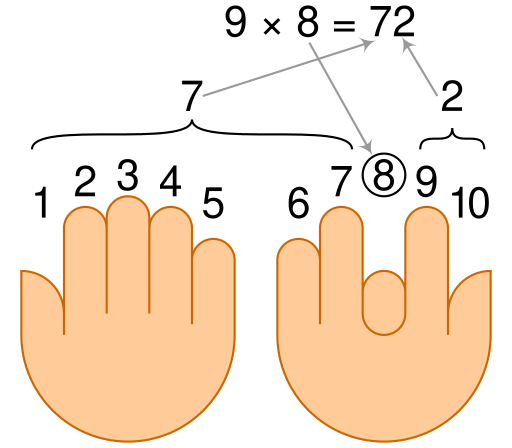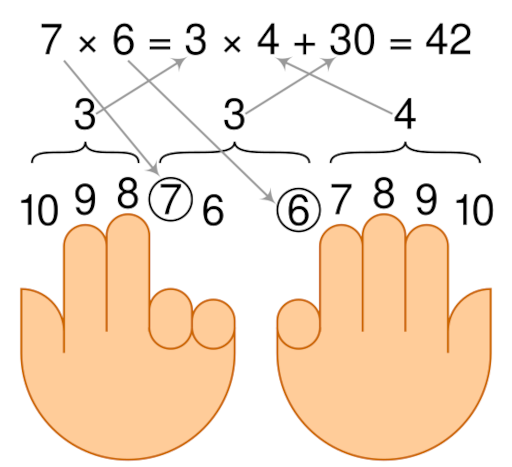
There are several simple little drawing tricks which the nurse may use to arouse the interest of her patient as she uses puzzles and catches. The oldest of these is by Hogarth and represents a soldier and his dog going through a doorway. As is seen by the diagram, it consists of three straight lines and one curved one.
— William Rush Dunton, Occupation Therapy, 1915
In the 1950s, humorist Roger Price invented “Droodles,” simple enigmatic drawings explained by their captions. Frank Zappa used one on the cover of a 1982 album:

It’s called Ship Arriving Too Late to Save a Drowning Witch.


